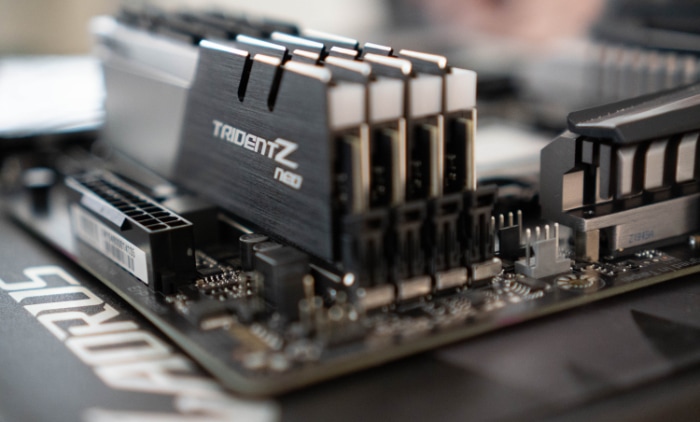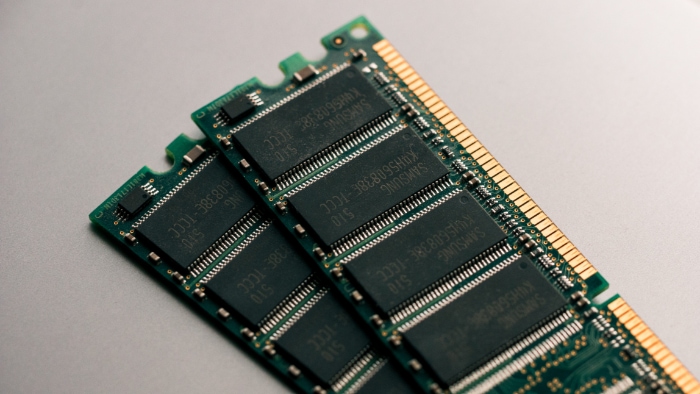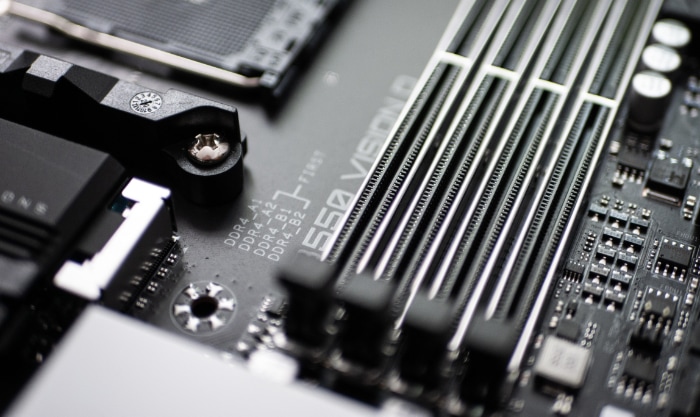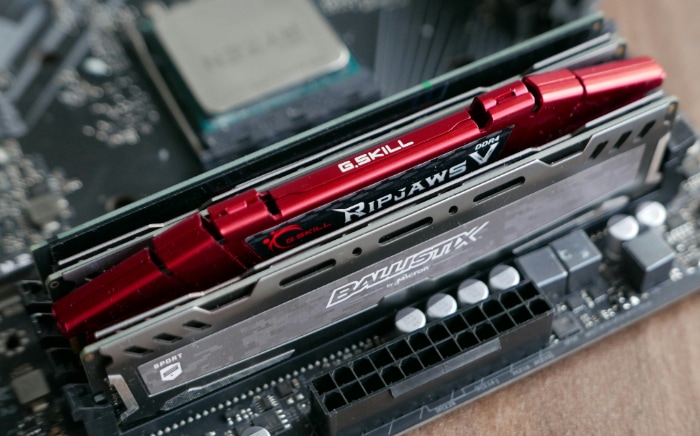Is 32GB RAM Worth It? The Performance Benefits Explained

RAM plays a crucial role in how smoothly your computer handles everyday tasks and demanding workloads. As software becomes more complex and users juggle multiple applications at once, the demand for higher RAM capacities continues to rise.
For many, 8GB or 16GB of RAM might be enough, but power users and professionals often wonder if upgrading to 32GB is a worthwhile step. Is the added memory overkill for the average user, or does it provide tangible benefits that justify the cost?
Who Benefits Most from 32GB of RAM?
The need for more memory in a computer largely depends on the types of tasks being performed. While 16GB of RAM is sufficient for many users, certain professionals and enthusiasts can see significant improvements with 32GB.
Content Creators and Professionals
Content creators are among the most likely to benefit from upgrading to 32GB of RAM. Video editing, 3D rendering, graphic design, and working with large files demand a lot of system resources.
Applications such as Adobe Premiere Pro, After Effects, and Autodesk Maya are known for being resource-heavy, especially when dealing with high-resolution videos, intricate animations, or complex 3D models.
For example, video editors working with 4K footage or engaging in projects that require multiple layers of effects often encounter slowdowns with lower RAM capacities. With 32GB of RAM, these professionals can expect smoother playback, faster rendering times, and a more responsive workflow.
Similarly, graphic designers working with large images in applications like Adobe Photoshop or Illustrator will notice quicker file handling and less lag when working with multiple assets.
For 3D rendering and motion graphics, the extra memory is invaluable, as these processes require vast amounts of data to be loaded into memory at once.
Large textures, high polygon counts, and complex lighting calculations can push a system to its limits, making 32GB of RAM essential for maintaining productivity.
Gamers and Enthusiasts
Gaming has evolved over the years, with modern AAA titles becoming much more demanding in terms of both graphics and system resources. While most games run smoothly with 16GB of RAM, certain scenarios call for more memory, especially for high-end gaming rigs.
Open-world games like Cyberpunk 2077, Red Dead Redemption 2, and Microsoft Flight Simulator are notorious for their large environments and detailed textures. These types of games can benefit from 32GB of RAM, as they load massive amounts of data simultaneously to ensure smooth gameplay.
With extra memory, gamers can experience fewer stutters, faster load times, and better overall performance, especially when gaming at higher resolutions such as 1440p or 4K.
Moreover, gamers who also stream their gameplay or use mods will find the additional RAM particularly useful. Streaming software like OBS Studio takes up a significant portion of system resources, and when combined with a demanding game, 16GB of RAM can quickly become insufficient.
By upgrading to 32GB, gamers can ensure that both the game and the streaming software run smoothly without affecting frame rates or introducing latency.
Modding is another area where more RAM can make a noticeable difference. Mods that add new textures, assets, or gameplay elements can significantly increase a game’s memory usage.
For example, games like Skyrim or Fallout 4 with extensive modding communities can easily use more than 16GB of RAM, especially with high-resolution texture packs or large-scale mods.
Data Scientists and Developers
For professionals working in data science, software development, or related fields, 32GB of RAM can be a game-changer. These fields often involve working with large datasets, complex computations, and simulations that require a lot of processing power and memory.
Machine learning is a prime example of where more memory proves advantageous. Training models often requires vast amounts of data to be loaded into memory so that the system can perform calculations efficiently.
With insufficient RAM, data has to be swapped between the memory and the hard drive, significantly slowing down the process. By having 32GB of RAM, data scientists can keep more data in memory at once, speeding up training times and allowing for more complex models.
Developers working with virtual machines or Docker containers also benefit from extra memory. Running multiple virtual machines or containers simultaneously can quickly exhaust available RAM, leading to slowdowns and unresponsive systems.
With 32GB of RAM, developers can run more instances concurrently, test their code in different environments, and simulate real-world scenarios without performance drops.
Additionally, data analysis often requires loading large datasets into memory for processing. Programs like R or Python libraries such as Pandas need sufficient memory to handle large dataframes efficiently.
Upgrading to 32GB of RAM allows data analysts to work with bigger datasets without running into memory constraints, enabling smoother workflows and faster results.
Cost vs. Performance: Is 32GB Worth the Investment?

Upgrading to 32GB of RAM can be a significant decision, especially when considering the cost involved. For many users, the question isn't just about whether they can afford the upgrade, but whether it offers tangible benefits that justify the expense.
Price Comparison
The cost of RAM has fluctuated over the years, but in general, 16GB and 32GB kits are now widely available at reasonable prices. However, the jump from 16GB to 32GB still represents a noticeable increase.
For example, a high-quality 16GB DDR4 kit might cost around $50 to $80, while a comparable 32GB kit could range from $100 to $150 or more, depending on the brand, speed, and other factors like RGB lighting or overclocking capabilities.
While the additional $50 to $100 for 32GB of RAM may not seem like a huge difference, the question is whether this extra investment will result in a proportional increase in performance.
For casual users who primarily browse the web, stream videos, or use productivity software like Microsoft Office, the benefits of 32GB may not be immediately apparent.
However, for power users—such as content creators, gamers who stream, and developers—the performance boost can be well worth the extra cost.
It's important to consider your system's overall balance. Investing in 32GB of RAM when other components, such as the CPU or GPU, may be bottlenecking your performance could lead to diminishing returns.
If you’re spending on RAM but other critical components are outdated, the extra memory might not offer the performance boost you're expecting.
Diminishing Returns
One of the most important aspects of deciding on a memory upgrade is understanding the concept of diminishing returns. This essentially means that after a certain point, adding more RAM doesn’t offer the same level of performance improvement as the initial upgrade.
For most users, this point is usually reached at 16GB of RAM.
For casual users running multiple browser tabs, streaming content, or using lightweight productivity apps, 16GB is more than enough. In fact, many light-to-moderate users won't even come close to maxing out 16GB of memory in day-to-day use.
In these cases, upgrading to 32GB might result in very little noticeable improvement, making it an unnecessary expense.
However, for users dealing with more intensive applications or multitasking, 32GB can be necessary.
Creative professionals working with 4K video, 3D rendering, or large graphic files will notice a significant difference, as will developers running complex simulations or virtual machines.
Gamers who also stream or run mods alongside their gameplay may similarly find that 16GB becomes a limiting factor.
In short, if your typical memory usage rarely exceeds 10-12GB, upgrading to 32GB will likely provide minimal real-world improvements.
On the other hand, if you consistently find yourself maxing out 16GB of RAM, the jump to 32GB can prevent slowdowns, crashes, and other interruptions to your workflow.
Productivity Gains for Professionals
For professionals in fields like video editing, graphic design, software development, or data science, time is money. Upgrading to 32GB of RAM can significantly improve productivity by reducing wait times and improving system responsiveness.
When your system has enough memory to handle large files or complex processes smoothly, you spend less time waiting for tasks to complete and more time focusing on your work.
For example, video editors working with 4K or even 8K footage often encounter delays when previewing video or rendering effects if they’re working with insufficient memory.
Upgrading to 32GB allows these professionals to handle larger files without running into memory limitations, resulting in faster project completion times.
Similarly, 3D rendering tasks that might otherwise take hours to complete can be sped up when the system has enough RAM to load and process all the necessary assets efficiently.
In terms of multitasking, having 32GB of RAM allows professionals to run multiple resource-intensive applications simultaneously without bogging down the system.
For example, a graphic designer might run Adobe Photoshop, Illustrator, and After Effects concurrently, while also keeping a browser open with multiple tabs.
With 16GB of RAM, this could lead to sluggish performance or even crashes, but 32GB ensures that the system can handle all these tasks without a hitch.
When you factor in the time saved through faster processing and smoother multitasking, the initial investment in 32GB of RAM can pay off in the long run.
For professionals, the cost savings come through improved efficiency—completing projects faster, limiting downtime, and ultimately being able to take on more work.
Future-Proofing Your System

As technology continues to advance, the demands placed on computer hardware increase. Upgrading to 32GB of RAM can be a strategic move to ensure that your system remains capable of handling future workloads without slowing down or requiring frequent upgrades.
Software Trends and Increasing Demands
Software is evolving, becoming more powerful and complex with each update. As a result, the memory requirements for applications are steadily growing.
Modern games, professional software, and even operating systems are designed to take advantage of the increased hardware capabilities found in newer machines.
In gaming, titles are becoming more graphically intensive and feature-rich, with open-world games, realistic physics simulations, and high-resolution textures requiring significant memory resources.
While 16GB is generally sufficient for most current games, future titles may demand more memory to deliver smooth gameplay, especially at higher resolutions like 4K.
Developers are continuously pushing the boundaries of what games can achieve, and as these games become more immersive and complex, the need for additional memory will naturally follow.
In content creation and professional work, software like video editing suites, 3D rendering tools, and data analysis platforms already consume large amounts of RAM.
As these programs integrate more features, handle larger files, and perform more complex tasks, the system’s memory requirements will grow.
For instance, working with 8K video footage or real-time 3D rendering will demand more RAM than current setups can comfortably handle. By upgrading to 32GB of RAM, you’re preparing your system to meet these future demands without needing frequent hardware changes.
Longevity of a System with 32GB
One of the most compelling reasons to upgrade to 32GB of RAM is its potential to extend the useful life of your computer. As software becomes more demanding, systems with lower memory capacities may struggle to keep up.
By equipping your machine with more RAM than is currently needed, you can delay the point at which your computer feels outdated or underpowered.
For instance, a system with 16GB of RAM might perform well today, but in a few years, it could struggle with the latest software, making workflows slower and leading to frustration.
On the other hand, investing in 32GB of RAM ensures that your machine can handle more demanding tasks for a longer period before requiring another upgrade.
This is particularly important for professionals, who rely on their systems for productivity and cannot afford the downtime associated with slow performance or frequent upgrades.
Balancing Future-Proofing with Current Needs
While future-proofing your system with 32GB of RAM is a smart choice for some users, it’s important to balance this with your current needs.
Not everyone requires 32GB of RAM today, and for those who primarily engage in light tasks—like web browsing, word processing, or casual gaming—the cost of upgrading may not be justifiable yet.
Another consideration is the overall balance of your system. If your CPU or GPU is already a bottleneck, upgrading to 32GB of RAM may not yield the performance improvements you’re expecting.
In such cases, it might be more prudent to upgrade other components first, ensuring that you get the most out of your hardware investment. RAM is just one component in a system, and it works in tandem with the processor, storage, and graphics card to deliver performance.
If one part of the system falls behind, additional memory may not be enough to compensate.
For many users, sticking with 16GB of RAM and monitoring how their system performs over the next year or two may be a more cost-effective approach.
As memory demands increase, upgrading to 32GB at a later time, when it's more necessary, could make more sense.
However, for users who frequently encounter memory limitations, upgrading now can prevent frustration and slowdowns, while also preparing the system for the future.
Technical Considerations Before Upgrading

Upgrading to 32GB of RAM can significantly improve your system’s performance, but it’s important to ensure that your hardware is ready to support the upgrade. In addition to checking component compatibility, the way you configure your RAM can impact its performance.
Compatibility with Your System
Before upgrading to 32GB of RAM, one of the first things you need to confirm is whether your motherboard can support that much memory. Not all motherboards allow for 32GB of RAM, especially in older systems.
Most modern motherboards, especially those designed for gaming or professional workstations, will support 32GB or more, but it’s always best to check your system’s specifications to be sure.
This information can typically be found in your motherboard’s user manual or on the manufacturer’s website.
Another important consideration is the number of memory slots your motherboard has. Some motherboards may only have two slots, meaning that if you’re upgrading to 32GB, you’ll need to purchase larger memory modules (e.g., two 16GB sticks).
On a board with four slots, upgrading can be done more gradually, allowing you to add additional sticks of RAM over time, rather than replacing all your modules at once.
You’ll also need to check your operating system to ensure it supports 32GB of RAM. While modern 64-bit versions of Windows, macOS, and Linux can handle well over 32GB, some older 32-bit operating systems have memory limitations.
For example, 32-bit versions of Windows are capped at 4GB of usable RAM. If you’re using an older system, upgrading your OS may be necessary to take full advantage of the additional memory.
Single vs. Dual Channel Memory Configurations
When upgrading your RAM, how you configure it can have a noticeable impact on performance. Most motherboards support either single-channel or dual-channel memory configurations, and dual-channel setups generally provide better performance.
In a single-channel configuration, all of your memory modules share the same data channel, meaning that data is transmitted in a single stream. This setup works, but it can limit the speed at which data is sent to and from the RAM.
In contrast, dual-channel configurations allow for two memory channels to operate simultaneously, effectively doubling the bandwidth available to your RAM.
This results in faster data transfer rates and can make a significant difference, particularly in tasks that rely heavily on memory, such as gaming, video rendering, and multitasking.
If you’re upgrading to 32GB of RAM, it’s often recommended to use two 16GB sticks in dual-channel mode rather than a single 32GB stick in a single-channel configuration. This not only improves performance but also offers more flexibility in the future if you decide to upgrade to an even larger capacity.
To take advantage of dual-channel memory, you’ll need to ensure that your memory modules are installed in the correct slots.
Many motherboards color-code the slots for dual-channel configurations, so you should consult your motherboard manual to see which slots need to be populated for optimal performance.
Power Consumption and Heat Generation
Adding more RAM to your system can slightly increase power consumption and heat generation, but these effects are generally minimal in modern systems. Most DDR4 and DDR5 RAM modules are designed to be energy efficient, with standard modules only consuming around 1.2V to 1.35V of power.
Even when upgrading from 16GB to 32GB, the overall increase in power draw is unlikely to have a significant impact on your system’s power usage, unless you are running a large number of other high-power components at the same time.
Similarly, the additional heat generated by adding more RAM is usually negligible, especially in systems with adequate cooling.
High-quality RAM sticks are designed to operate within safe temperature ranges, and most modern RAM comes with heat spreaders or other cooling solutions to help dissipate heat.
However, if your system is already prone to overheating or if you’re running it in an environment with poor airflow, it’s worth considering whether you need to improve your cooling setup before installing additional memory.
It’s also important to note that overclocking your RAM can increase both power consumption and heat production.
While overclocking can improve performance in some cases, it can also put additional strain on your CPU and other components, so careful consideration should be given before making any adjustments to your memory’s clock speed.
Conclusion
Upgrading to 32GB of RAM can be a valuable investment for certain users, particularly those who work with resource-intensive applications or engage in heavy multitasking.
Content creators, gamers, and professionals in fields like data science and software development are likely to see the most significant benefits in terms of performance, productivity, and future-proofing.
While the cost is higher than sticking with 16GB, the gains in speed and efficiency can make the upgrade worthwhile for those pushing their systems to the limit.
However, not every user needs 32GB of RAM today. For casual use or light multitasking, 16GB remains sufficient in most cases.
It’s essential to evaluate your specific needs, check system compatibility, and ensure that other components won’t bottleneck performance before making the leap to a higher memory capacity. Balancing current performance with future demands is ultimately the best approach when deciding how much RAM is right for your setup.


